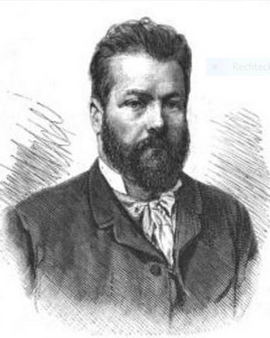


Julius Anton Adam, also known as "Katzenadam" or "Katzenraffael", saw the light of day on May 18, 1852 in Munich, a city famous as the cradle of German Romanticism and for its rich artistic history. His father, also named Julius Adam, was an esteemed lithographer and photographer. Young Adam followed his father to the photo studio after graduating from secondary school and began his artistic career with landscape photography. His talent for pictorial representation and artistic eye led him to Brazil, where he worked as a retoucher in Rio de Janeiro for nearly six years.
With a desire to further develop his artistic skills, Adam returned to Germany where he continued his education under the tutelage of Michael Echter at the Royal School of Applied Arts in Munich. He later entered the prestigious Munich Academy and became a student of Wilhelm von Diez, one of the leading painters of his time. After six years of intensive study and artistic practice, Adam settled in Munich in 1882 as a genre and animal painter. It was during this time that he created his famous cat paintings, which earned him his nickname "Katzenadam".
In 1893 Adam, who by then had been appointed an academy professor, moved into a newly built villa at Böcklinstrasse 25 in the villa colony of Gern, which he had purchased from Heilmann and Littmann. Here he lived and worked until his death in 1913. Adam's depictions of cats became known around the world and celebrated, especially in the United States. His works, including "Mother's Happiness," "The Last Bite," "The Patient," "Siesta" and "Warming Room," were awarded a gold medal at the 1905 International Art Exhibition in Munich.
Although there is an inscription on the grave site of his grandfather Albrecht Adam indicating that Julius Adam is also buried there, his name is not found in the official grave book. Regardless of this ambiguity, his artistic legacy and unique ability to capture the soul and essence of cats on canvas remains unforgotten. The works of Julius Anton Adam are more than just pictorial representations - they are a window into the soul of the animals he so lovingly portrayed.

Julius Anton Adam, also known as "Katzenadam" or "Katzenraffael", saw the light of day on May 18, 1852 in Munich, a city famous as the cradle of German Romanticism and for its rich artistic history. His father, also named Julius Adam, was an esteemed lithographer and photographer. Young Adam followed his father to the photo studio after graduating from secondary school and began his artistic career with landscape photography. His talent for pictorial representation and artistic eye led him to Brazil, where he worked as a retoucher in Rio de Janeiro for nearly six years.
With a desire to further develop his artistic skills, Adam returned to Germany where he continued his education under the tutelage of Michael Echter at the Royal School of Applied Arts in Munich. He later entered the prestigious Munich Academy and became a student of Wilhelm von Diez, one of the leading painters of his time. After six years of intensive study and artistic practice, Adam settled in Munich in 1882 as a genre and animal painter. It was during this time that he created his famous cat paintings, which earned him his nickname "Katzenadam".
In 1893 Adam, who by then had been appointed an academy professor, moved into a newly built villa at Böcklinstrasse 25 in the villa colony of Gern, which he had purchased from Heilmann and Littmann. Here he lived and worked until his death in 1913. Adam's depictions of cats became known around the world and celebrated, especially in the United States. His works, including "Mother's Happiness," "The Last Bite," "The Patient," "Siesta" and "Warming Room," were awarded a gold medal at the 1905 International Art Exhibition in Munich.
Although there is an inscription on the grave site of his grandfather Albrecht Adam indicating that Julius Adam is also buried there, his name is not found in the official grave book. Regardless of this ambiguity, his artistic legacy and unique ability to capture the soul and essence of cats on canvas remains unforgotten. The works of Julius Anton Adam are more than just pictorial representations - they are a window into the soul of the animals he so lovingly portrayed.
Page 1 / 1






